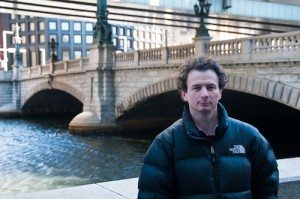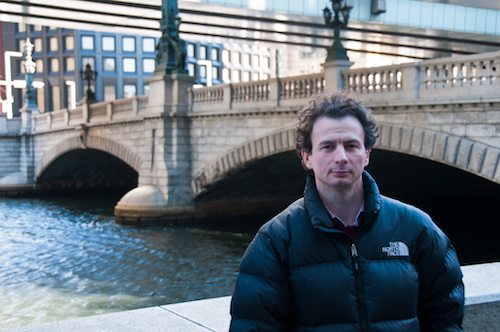
Godzilla is the nickname of the Nissan GT-R sports car I’d collected earlier from Nissan’s global headquarters in Yokohama.
Of the 10 articles I’ve so far had published from that 2014 trip to Japan, two were about a car.
Travel writing can provide great perks. Accommodation for about half the nights of my stay in Japan were comped, and I went on a six-day guided walk valued at about $2,500, free of charge, plus had tourist boards showing me around in various locations. But I don’t just write travel articles from my trips.
I’ve found the key to maximizing your success and profits from each trip is to try to marry your writing with your interests. This travel writing hack is the sweet spot of profit.
When I started writing in 2000, I only wrote travel articles – but from these trips, I’ve since branched out into writing about some of my other interests. Today, two of the main ones are food-and-drink-related articles and articles to do with cars.
I love trying new flavors and foods, so, when traveling, I want to try the local specialties. (My only real provisos are I won’t eat endangered species; I don’t want to eat something that is still alive; and, equally, I don’t want to do a meet and greet before it dies. Unfortunately, living in Asia, I have had to, on occasion, abandon most of these principles.)
Many well-known destinations have loads of good restaurants that specialize in every cuisine except for that of the locals. I found this to be true in both Bali and Laos. However, by venturing off and tapping into the local food, I have been able to sell two articles about Lao cuisine. Although both have slightly different angles, they use largely the same information and are mainly about introducing the food to potential visitors.
I’ve used my interest in cars to get paid to travel, too. Last year, a friend proposed a week’s road trip through the wilds of Sichuan Province, China, with the aim of reaching a Tibetan Buddhist monastery. I saw pictures of the place he was trying to reach and it looked fabulous. The problem was, I didn’t have the cash to make the trip, so I needed to find a way to fund it.
I regularly write for a Hong Kong newspaper about cars, including test drives. So I proposed something new – a mixture of a travel article and test drive of the Land Rover Discovery Sport we would use.
Luckily the editor loved the idea as he wanted to try something different.
I used a similar approach for two articles on a trip to Beijing last year. Museums in many ways are a staple of travel writing; classic cars not necessarily so. Beijing is home to a museum with the largest collection of Hongqi (Red Flag) cars, the state limousines of the Chinese government. An interview with the collector highlighting some of the prize exhibits appealed to a British classic car magazine. Similarly an article exploring Beijing’s car modification culture was a good fit for a destination-type piece in an airline magazine.
Even if you’re lucky enough to get all your trips paid for, you still have a time cost. To make a trip financially worthwhile, seek to maximize your income by writing as many articles as possible from your experiences on your trips.
On my Beijing trip, I stopped off at a coalmine from which I wrote an article for a heavy-equipment magazine. With my Sichuan journey, I added an extra day onto the trip to visit a craft-beer brewery for an article that netted me an additional $500.
Finding your niche is essentially about letting your interests intersect with travel. There can be a lot of competition when it comes to travel writing. With more specialized interests, you have far less competition and often can command a higher pay rate per article.

